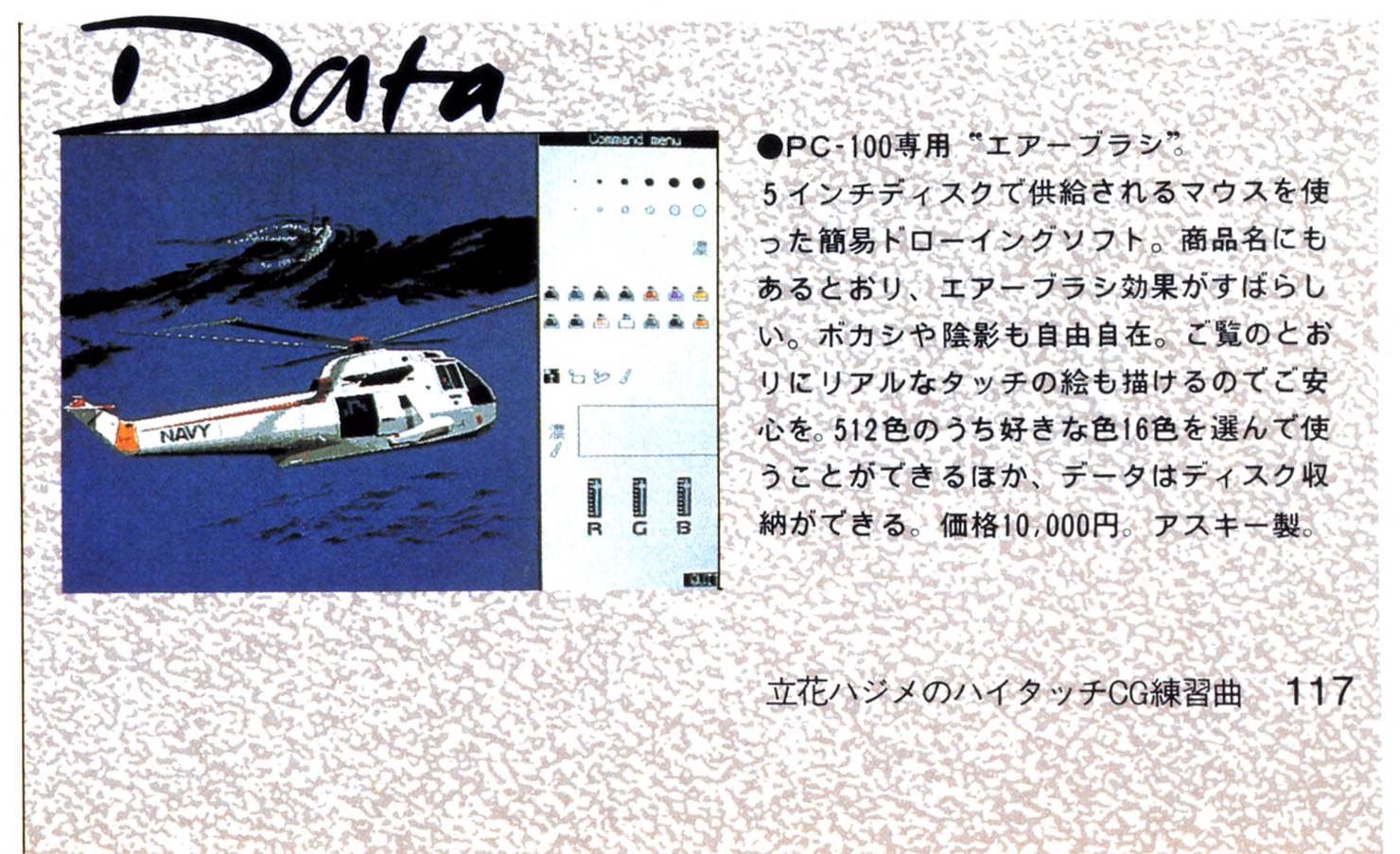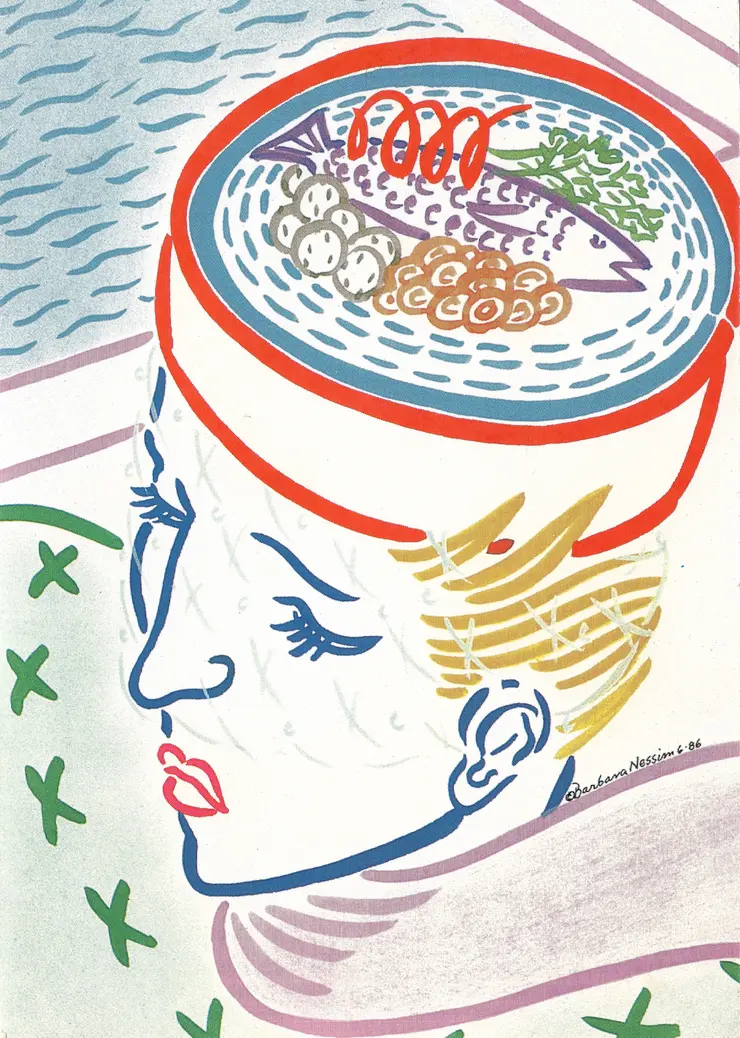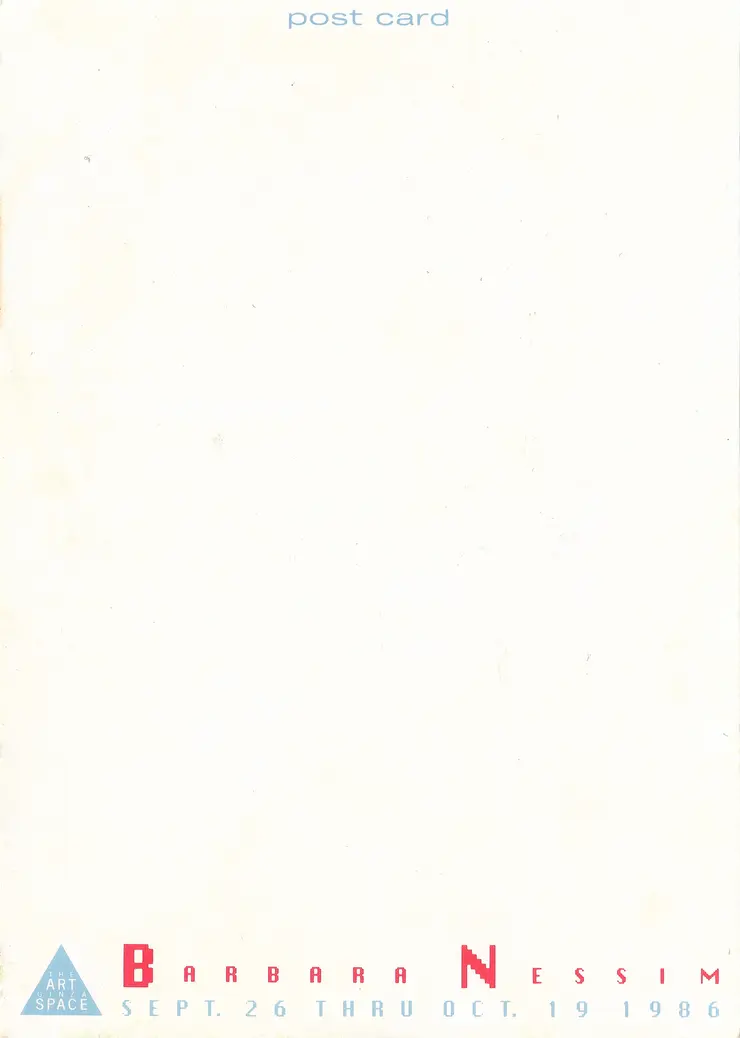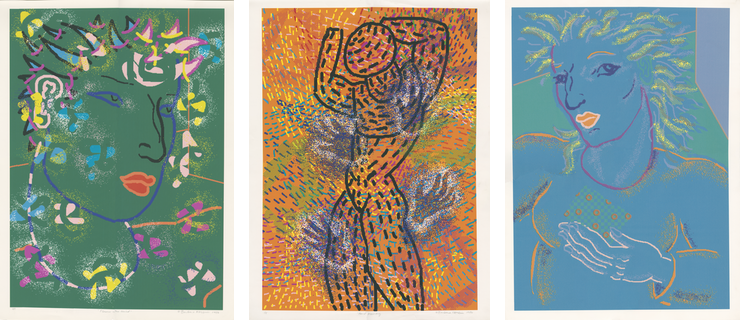At the end of 2023 I bought a one-in-a-million find from Japan: it’s a postcard from Barbara Nessim’s residency at The Ginza Art Space, September 26 thru October 19 1986. This residency came on the back of her breakthrough early computer art that was done on a Telidon system, a type of Teletext graphics system that displayed rudimentary vector graphics.
The postcard artwork is not digital and is dated 6-86. The details on the rear are set in the Chicago typeface designed by Susan Kare for the Apple Macintosh just a couple of years prior.
As well as Barbara’s residency there was an accompanying exhibition “The Work of Barbara Nessim”.
Made in Japan
During her time at The Ginza Art Space, Barbara used an NEC PC-100 to draw new work and printed them on one of the earliest wide-format colour inkjet printers, the Fujix JetGraphy 3000 (I’d love to be able to read this article at ResearchGate). Given the use of early technology and non-archival inks, the prints are prone to fading and are now very fragile.
The choice of PC-100 computer is interesting because its display could be rotated between portrait and landscape. In portrait orientation it had a resolution of 512×720, which is seven times more pixels than the Telidon system and twice as tall as the Macintosh Plus. The PC-100 displayed bitmap graphics so it was more similar to the Macintosh than the vector graphics of the Telidon system.
Colours were limited: the PC-100 hardware could display 16 colours from a palette of 512. The printer used CMYK and could produce around 10,000 colours, some of which printed better than others. This combination may have imposed some limitations as to which colours could, or should, be used.
Below are three examples of the work Barbara produced at The Ginza Art Space: they are Flowers in the Wind, Hand Memory, and The Gift. A description of the creative process is featured in Carol Olsen Day’s article “The Art of Barbara Nessim”, in the October 1988 issue of PC Computing.
What software?
My ongoing research into early Japanese pixel art software shows that Barbara most likely used ASCII’s エアーブラシ “Airbrush” painting software on the NEC PC-100, as it is the only graphics software for that platform I’ve been able to find advertised for sale or featured in period literature.




Like what you read? Show your appreciation with ko.fi!
--
Comments: @gingerbeardman